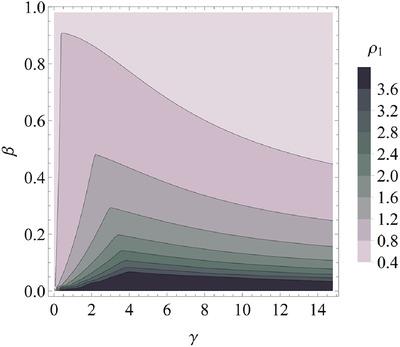Our official English website, www.x-mol.net, welcomes your
feedback! (Note: you will need to create a separate account there.)
On the influence of external stochastic excitation on linear oscillators with subcritical self‐excitation and gyroscopic influence with application to brake squeal
ZAMM - Journal of Applied Mathematics and Mechanics ( IF 2.3 ) Pub Date : 2020-06-17 , DOI: 10.1002/zamm.202000113 M.‐T. Nguyen‐Thai 1 , P. Wulff 2 , N. Gräbner 2 , U. Wagner 2
ZAMM - Journal of Applied Mathematics and Mechanics ( IF 2.3 ) Pub Date : 2020-06-17 , DOI: 10.1002/zamm.202000113 M.‐T. Nguyen‐Thai 1 , P. Wulff 2 , N. Gräbner 2 , U. Wagner 2
Affiliation

|
In a linear analysis for brake squeal, an unwanted type of sound in the kHz‐range produced during the braking process of vehicles, usually only the stability of the system is examined. However, with the appearance of additional stochastic excitation, the vibration of a linear system with subcritical self‐excitation, i.e. having self‐excitation but due to damping still an asymptotically stable trivial solution, may be large enough to produce a squeal sound. In this paper, this hypothesis of stochastically reinforced self‐excitation is supported by a case study on a wobbling disk model for brake squeal, which includes both circulatory and gyroscopic forces. For this example, the Fokker‐Planck equation is solved and numerical integrations are performed. A short parameter study is carried out to examine the effect of damping and gyroscopic terms on these stochastically reinforced self‐excitation. The results suggest that this possibility should be considered additionally to classical explanations of brake squeal.
中文翻译:

外部随机激励对具有亚临界自激和陀螺仪影响的线性振荡器的影响及其在制动尖叫中的应用
在制动尖叫声的线性分析中,在车辆制动过程中会产生kHz范围内的有害声音,通常只检查系统的稳定性。然而,随着额外的随机激励的出现,具有亚临界自激励的线性系统(即具有自激励但由于阻尼仍然是渐近稳定的平凡解)的振动可能足够大,以产生尖叫声。在本文中,关于随机增强自激的这一假设得到了一个用于制动尖叫的摆动盘模型的案例研究的支持,该模型包括循环力和陀螺力。对于此示例,求解了Fokker-Planck方程,并进行了数值积分。进行了一项简短的参数研究,以检验阻尼和陀螺仪项对这些随机增强的自激的影响。结果表明,除了对制动尖叫的经典解释外,还应考虑这种可能性。
更新日期:2020-06-17
中文翻译:

外部随机激励对具有亚临界自激和陀螺仪影响的线性振荡器的影响及其在制动尖叫中的应用
在制动尖叫声的线性分析中,在车辆制动过程中会产生kHz范围内的有害声音,通常只检查系统的稳定性。然而,随着额外的随机激励的出现,具有亚临界自激励的线性系统(即具有自激励但由于阻尼仍然是渐近稳定的平凡解)的振动可能足够大,以产生尖叫声。在本文中,关于随机增强自激的这一假设得到了一个用于制动尖叫的摆动盘模型的案例研究的支持,该模型包括循环力和陀螺力。对于此示例,求解了Fokker-Planck方程,并进行了数值积分。进行了一项简短的参数研究,以检验阻尼和陀螺仪项对这些随机增强的自激的影响。结果表明,除了对制动尖叫的经典解释外,还应考虑这种可能性。











































 京公网安备 11010802027423号
京公网安备 11010802027423号